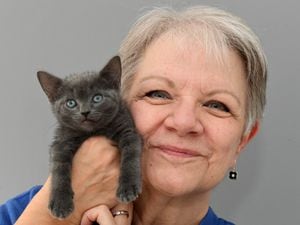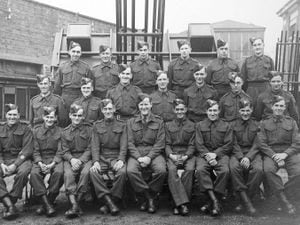Is social media behind the sharp rise in knife crime?
Footballer Troy Deeney has said social media is adding to the problem of knife crime – and a West Midlands support groups say there is truth behind his claims.
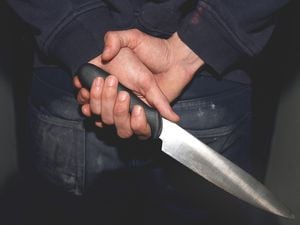
Humiliation is a potent force when it comes to young gangs – so when a fight is plastered all over social media, members are seeking retribution.
“Back in the day you used to have a fight,” says West Midlands-born footballer Deeney this week. “You win, you lose, you get up and go home, dust yourself down.

“Social media made it so that if you lose a fight it is on camera, you are embarrassed and you are forced to react.
“It takes a very strong person to not react and the only other way they know how to do that is with a weapon, unfortunately.”
The number of people carrying knives on Britain’s streets is greater than at any other time in living memory.
Across England and Wales, the number of fatal stabbings hit the highest level since comparable records began, more than 70 years ago according to the Office for National Statistics.
The figure show that in 2017/18, West Midlands Police recorded 2,850 cases with knives or sharp weapons, and increase of 72 per cent on four years earlier.
West Mercia Police recorded a 70 per cent rise with 453 cases, and Staffordshire Police saw a 65 per cent increase with 677 cases reported.
Catch22 is a youth organisation that runs the Wolverhampton Violence Reduction Team aimed at supporting and rehabilitating young people inside or on the fringes of gangs and is supported by West Midlands police and crime commissioner David Jamieson.
The group’s case workers say they have experienced a dramatic increase in referrals over the last 18 months, with those they are working aged as young as 11 years old.
Debi Thomas is the team’s manager and she says that referrals are on the rise.
“The ages of the young people are getting younger and younger,” she says. “We are starting to see issue raising in those around 11 or 12.”
In recent years there have been a number of examples of deaths from knife attacks across the West Midlands and Shropshire.
In Walsall James Brindley, 26, was stabbed in the heart 400 metres from his parents’ home in June 2017 and his killer, 17-year-old Ammar Kahrod, was sentenced to 17 years in prison for the random attack.

And in October 2017 Reagan Astbury, 19, died after being stabbed outside Walsall Town Hall after violence broke out at a boxing event. Tyrone Andrew was jailed for 14 years for the manslaughter
In Shrewsbury Michael Warham, from the Bootle area of Merseyside, was found with stab wounds in Meole Brace area of the town in August 2016.
His killer Declan Graves, 20, also from Liverpool, was jailed for at least 20 years for his murder.
Former Walsall forward Deeney, who grew up in a high-rise block of flats in Birmingham which was a centre for gang activity, has carved out a career which has since seen him become a regular for top-flight Watford.
But his experiences as a youth have informed his view of gangs, and his claims about the problems of knife crime appear to be supported by others.
One of the project managers at Catch22 is Steve, who declines to give his surname. He works alongside the young people, and agrees with Deeney’s assessment.
“We look at social media as being a catalyst,” he says. “It’s a relatively new phenomenon and there have been no real studies yet as to the impact it has on young people.
“Back in the day if you had a problem with someone it would go away until you saw that person again. But now it’s all over social media and you have people egging them on in the comments saying things like ‘what are going to do about it?’. It encourages it.
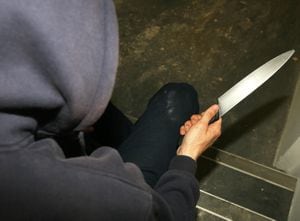
“A lot of it is also about reputation. People always want to keep a good reputation and that is the same for these guys on social media.
“Everything can be seen there. Young people have to deal with this all day and all night.
“They are constantly living it and there is no time out.
“Another thing is the pictures. Young people are always putting pictures of everything on social media and there are those who picture themselves in balaclavas and with knives and it puts fear into young people and they think they need to carry to protect themselves.”
Debi also believes that gangs are using social media to keep up their reputations.
“Any organised criminals or gangs want to have their brands on top,” she says.
“That is one of the things that causes revenge and where you see the extreme violence.
“So if one person slashes an arm then the next will put a knife into the arm and it just escalates.”
The home secretary Sajid Javid is today meeting police chiefs from around the country to discuss the issue of knife crime, amid mounting pressure on the Government to act on the issue.
He has condemned the “senseless violence”, saying: “Young people are being murdered across the country. It can’t go on.”
Prime Minister Theresa May said she recognised people’s concern, but insisted there was “no direct correlation” between the rise in knife crime and a fall in police numbers.
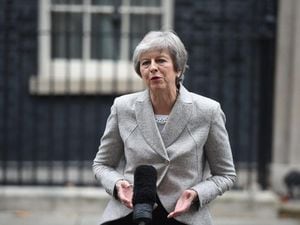
Number 10 has subsequently tempered that suggestion following an outcry, adding that the Prime Minister meant that the reasons for knife crime were complex, and that early intervention was also required to tackle the problem.
The Police Federation’s chairman John Apter said that neighbourhood policing teams, which can tackle knife crime by working more closely with communities, have been “stripped to the bone”.
For Steve, who used to work in youth centres, the core of the problem is that young people have become disenfranchised.
“Young people aren’t stupid and they’re not robots,” he said.
“They know there is no care, empathy or attention towards them and that has to change.
“It’s about giving them opportunities. Young people aren’t being given chances, especially since youth clubs shut down.
“They used to be a place where they would be comfortable in their won community and where we as youth workers could engage with them.
“We have to get them more engaged with good and positive activities.
“Young people have a lot of energy and if that isn’t being put towards something positive then it will be used negatively.”

